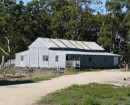GLENAMPLE HOMESTEAD
8616 GREAT OCEAN ROAD PRINCETOWN, CORANGAMITE SHIRE
-
Add to tour
You must log in to do that.
-
Share
-
Shortlist place
You must log in to do that.
- Download report
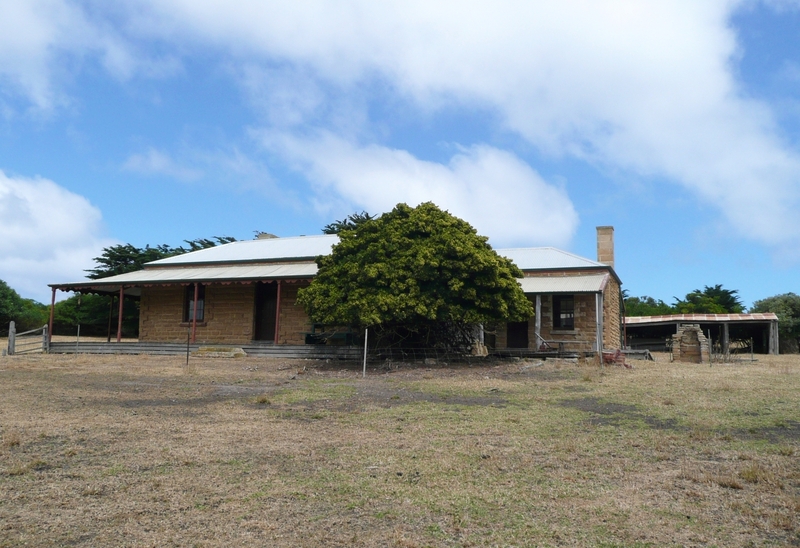

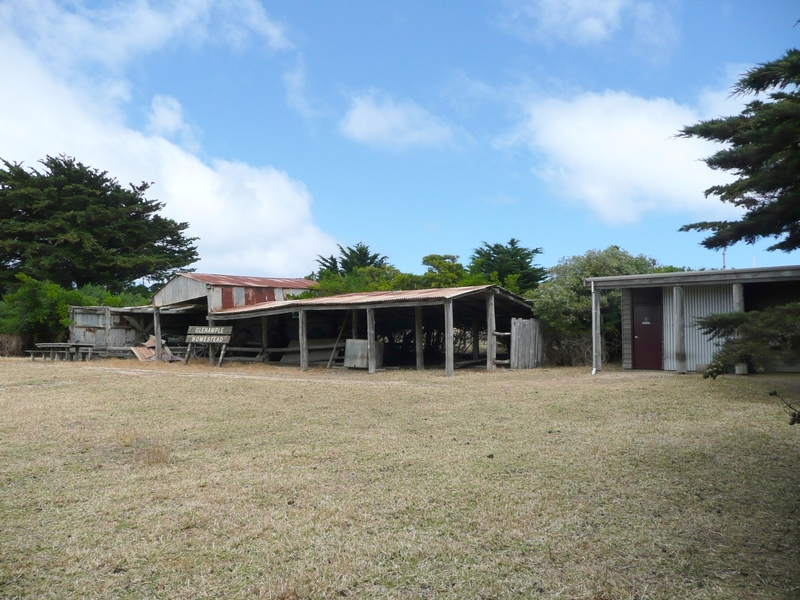
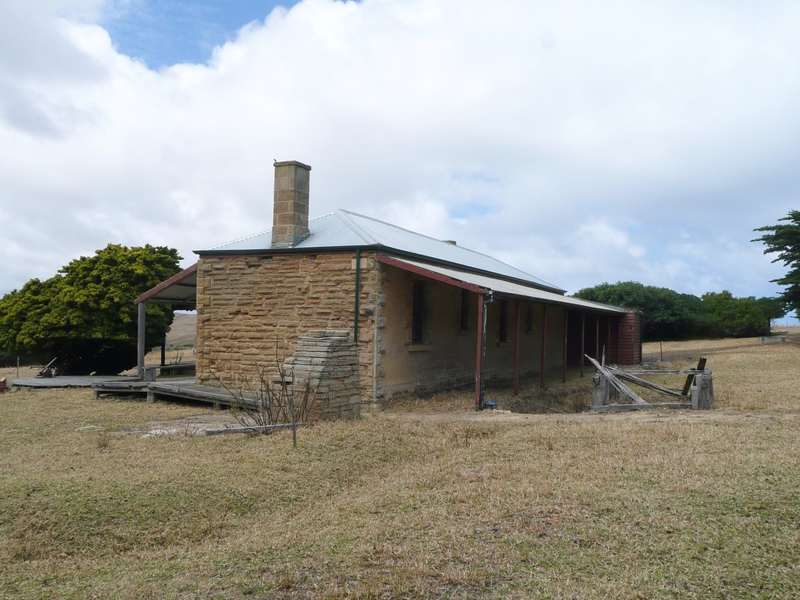

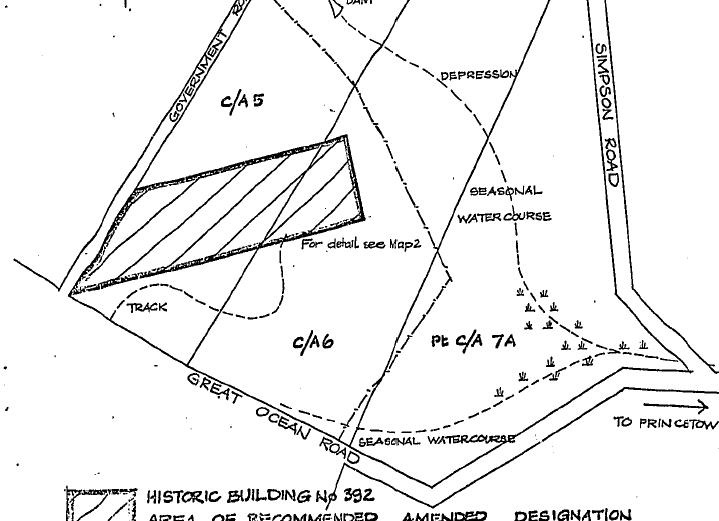
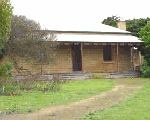



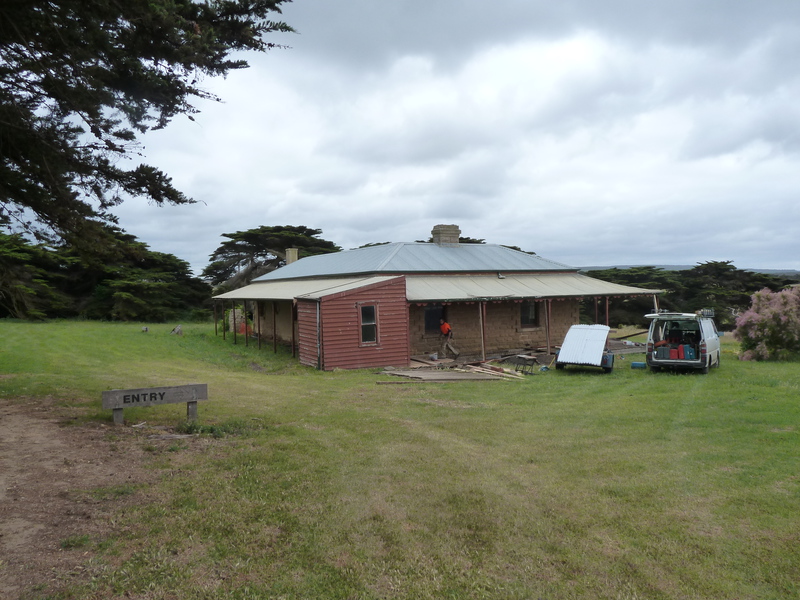
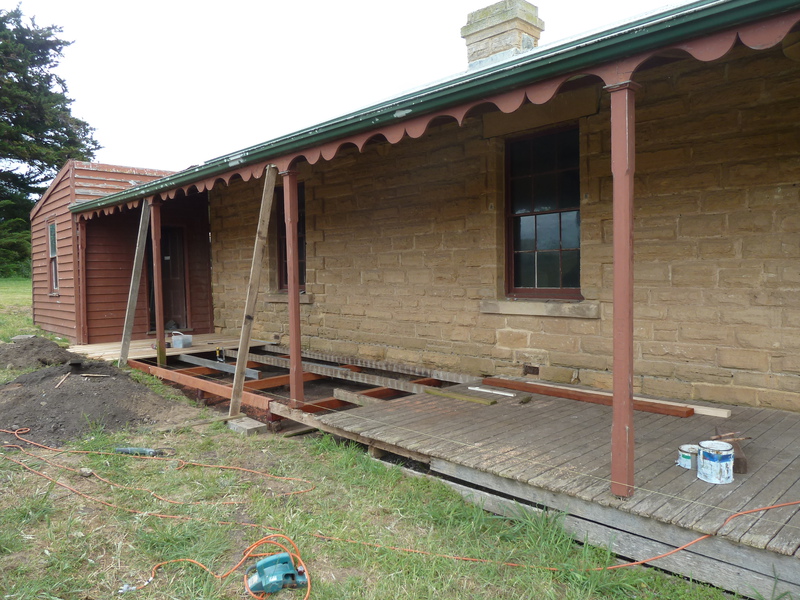
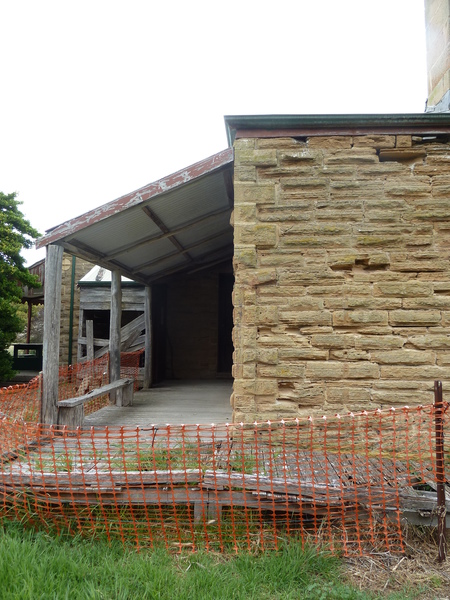
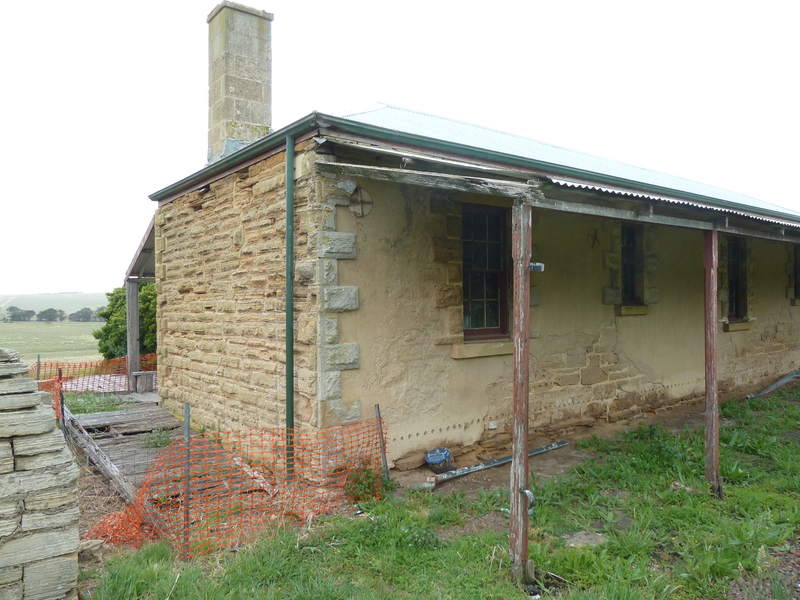
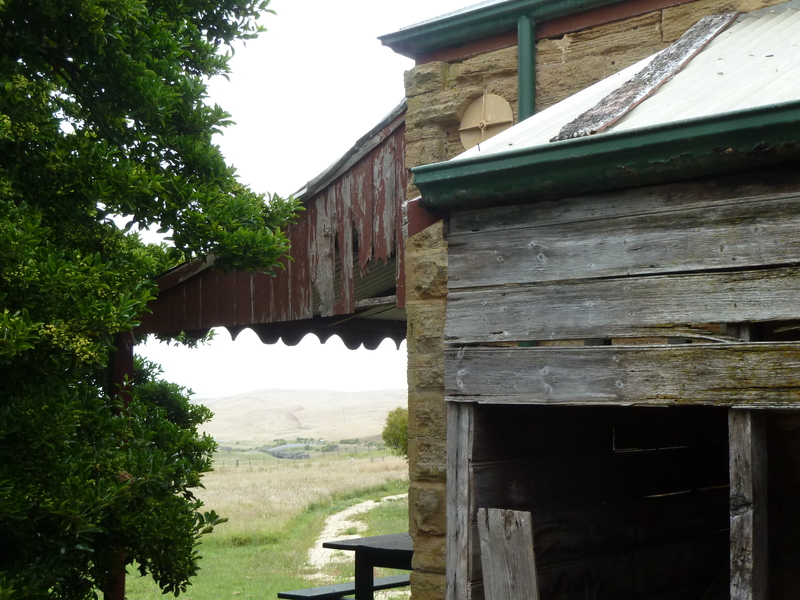

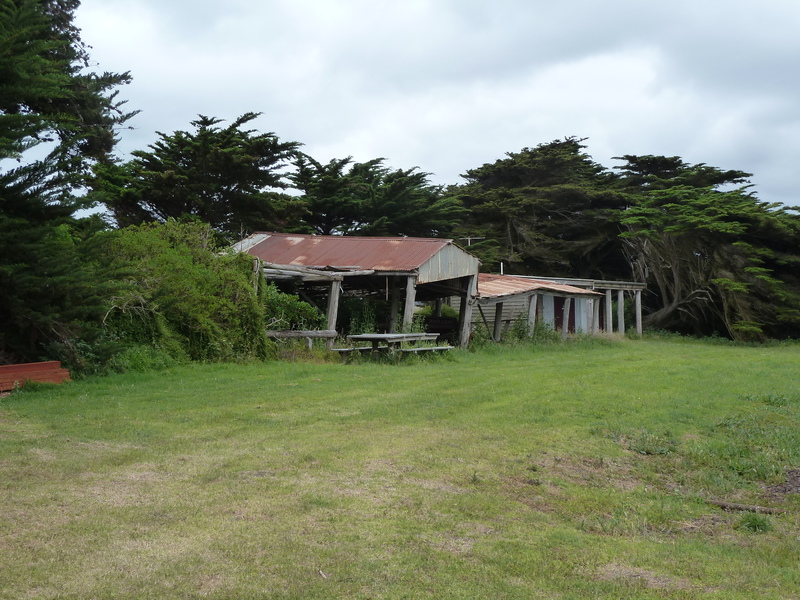
Statement of Significance
What is significant?
The wild terrain, steep cliffs and a densely-forested strip along the south-western coastline of Victoria discouraged early settlers but during the 1840s, Captain Alexander Campbell, a whaler from Tasmania began taking shelter in the only navigable bay [later bearing his name] and pastoralists sought to take advantage of the rich grasslands beyond the coastal strip. In 1845-46 Superintendent Charles La Trobe sought to establish a coastal track between the Hopkins River and Cape Otway and returned in 1846 to establish a track from the landward side to facilitate the construction of a lighthouse on Cape Otway following a number of shipping disasters in the vicinity. The subsequent 1847 plan of the coast drafted by Contract Surveyor George Douglas Smythe which recorded details of the coastal plain in the Port Campbell region for the first time also noted the existence of Kernan's Station, the site of the later Glenample Homestead.
The land on which Glenample Homestead stands was originally part of the Kernan's Station pastoral lease established by 1847. In 1856-57, James Murray acquired Kernan?s Station and consolidated it with a neighbouring property to form a new holding which he named Glenample. Murray constructed some huts on the property, some of which survived in a ruinous state on the property until recent times. Hugh Hamilton Gibson, a Scottish born pastoralist, acquired the run in 1866 in partnership with Peter McArthur of Meningoort, and built a house of locally quarried sandstone between 1866 and 1869.
In June 1878, Glenample Homestead and owners Hugh and Lavinia Gibson came to national attention through a significant association with the Loch Ard disaster and the subsequent sheltering of the survivors, direction of salvage operations, and burial of the dead. The Loch Ard was a three-masted square rigged iron sailing ship which left England bound for Melbourne on the 2nd March 1878 under the command of twenty nine year old Captain Gibbs. At 3am on the 1st June 1878, Captain Gibbs was expecting to see land or the Cape Otway lighthouse but fog obscured his view. When the fog lifted, Gibbs was alarmed to find his ship much closer to shore than expected. Despite his best efforts the Loch Ard struck a rocky reef at the base of Mutton-bird Island and the ship was wrecked. Of the 54 crew and passengers on board, only two survived, Tom Pearce, an apprentice crewman, and a young woman passenger, Eva Carmichael who lost all her family in the tragedy. Pearce survived by clinging to a capsized lifeboat before eventually swimming into the gorge which now bears the name of the ill-fated ship. Eighteen year old Eva Carmichael spent five hours in the water until she too was swept into the gorge. Tom Pearce rescued the exhausted girl from a reef and brought her to a cave onshore. A few hours later Tom Pearce scaled a cliff in search of help and came by chance upon two men from the Gibson's Glenample Homestead. Pearce returned to the gorge while the two men rode back to the station to get help. Tom Pearce and Eva Carmichael were taken to the station to recover. Eva stayed at Glenample for six weeks before returning to Ireland. The bodies of Eva Carmichael's young brother and sister Evory and Raby Carmichael were recovered and buried in a cemetery near the head of the gorge. Tom Pearce went to Melbourne where he was presented with the first gold medal of the Royal Humane Society of Victoria and a £1,000 cheque from the Victorian Government.
In 1886, the simple Georgian appearance of Glenample was altered by the construction of a verandah to three sides of the house by a carpenter employed by McArthur. In 1887, Gibson disposed of his portion of the run to Peter McArthur who had been the major shareholder. Peter McArthur's son Ernest McArthur inherited the property in 1897 following his father's death. In about 1911, Ernest McArthur established the Glenample Cheese Factory which established a wide reputation for quality cheese. The factory closed during the First World War but recommenced in 1929 when Ernest McArthur's sons Robert and Colin McArthur assumed control of the property. The McArthur family disposed of Glenample in 1945 and the house became uninhabited during succeeding ownerships. The dilapidated homestead was acquired by the National Parks Service and a restoration programme undertaken in the 1980s.
How is it significant?
Glenample Homestead is of historical, social and architectural significance to the State of Victoria.
Why is it significant?
Glenample Homestead is of historical and social significance for its unique association with the disastrous wreck of the clipper Loch Ard through the projection of Glenample and Hugh and Lavinia Gibson into national prominence for the role played by the couple and their homestead in the sheltering of the only two survivors of the wreck. Glenample's co-owner Peter McArthur was also a significant figure in the rescue and salvage operations and the burial of the dead.
Glenample Homestead is of historical significance as an important pastoral run integrally associated with the early development of the isolated south-west coastal region of Victoria.
Glenample Homestead is of architectural significance for the accomplished use of locally-quarried limestone in its construction and for its unaffected Georgian vernacular form.
[Online Data Upgrade Project 2005]
-
-
GLENAMPLE HOMESTEAD - History
Associated People: Assoc.People SCOTT FAMILY
Additional History 2005
The wild terrain, steep cliffs and a densely-forested strip along the south-western coastline of Victoria discouraged early settlers but during the 1840s, Captain Alexander Campbell, a whaler from Tasmania began taking shelter in the only navigable bay [later bearing his name] and pastoralists sought to take advantage of the rich grasslands beyond the coastal strip. In 1845-46 Superintendent Charles La Trobe sought to establish a coastal track between the Hopkins River and Cape Otway and returned in 1846 to establish a track from the landward side to facilitate the construction of a lighthouse on Cape Otway following a number of shipping disasters in the vicinity. The subsequent 1847 plan of the coast drafted by Contract Surveyor George Douglas Smythe which recorded details of the coastal plain in the Port Campbell region for the first time also noted the existence of ‘Kernan’s Station’, the site of the later Glenample Homestead.
The land on which Glenample Homestead stands was originally part of the Kernan’s Station pastoral lease established by 1847. In 1856-57, James Murray acquired Kernan’s Station and consolidated it with a neighbouring property to form a new holding which he named Glenample. Murray constructed some huts on the property, some of which survived in a ruinous state on the property until recent times. Hugh Hamilton Gibson, a Scottish born pastoralist, acquired the run in 1866 in partnership with Peter McArthur of Meningoort, and built a house of locally quarried sandstone between 1866 and 1869.In June 1878, Glenample Homestead and owners Hugh and Lavinia Gibson came to national attention through a significant association with the Loch Ard disaster and the subsequent sheltering of the survivors, direction of salvage operations, and burial of the dead. The Loch Ard was a three-masted square rigged iron sailing ship which left England bound for Melbourne on the 2nd March 1878 under the command of twenty nine year old Captain Gibbs. At 3am on the 1st June 1878, Captain Gibbs was expecting to see land or the Cape Otway lighthouse but fog obscured his view. When the fog lifted, Gibbs was alarmed to find his ship much closer to shore than expected. Despite his best efforts the Loch Ard struck a rocky reef at the base of Mutton-bird Island and the ship was wrecked. Of the 54 crew and passengers on board, only two survived, Tom Pearce, an apprentice crewman, and a young woman passenger, Eva Carmichael who lost all her family in the tragedy. Pearce survived by clinging to a capsized lifeboat before eventually swimming into the gorge which now bears the name of the ill-fated ship. Eighteen year old Eva Carmichael spent five hours in the water until she too was swept into the gorge. Tom Pearce rescued the exhausted girl from a reef and brought her to a cave onshore. A few hours later Tom Pearce scaled a cliff in search of help and came by chance upon two men from the Gibson’s Glenample Homestead. Pearce returned to the gorge while the two men rode back to the station to get help. Tom Pearce and Eva Carmichael were taken to the station to recover. Eva stayed at Glenample for six weeks before returning to Ireland. The bodies of Eva Carmichael’s young brother and sister Evory and Raby Carmichael were recovered and buried in a cemetery near the head of the gorge. Tom Pearce went to Melbourne where he was presented with the first gold medal of the Royal Humane Society of Victoria and a £1,000 cheque from the Victorian Government.
In 1886, the simple Georgian appearance of Glenample was altered by the construction of a verandah to three sides of the house by a carpenter employed by McArthur. In 1887, Gibson disposed of his portion of the run to Peter McArthur who had been the major shareholder. Peter McArthur’s son Ernest McArthur inherited the property in 1897 following his father’s death. In about 1911, Ernest McArthur established the Glenample Cheese Factory which established a wide reputation for quality cheese. The factory closed during the First World War but recommenced in 1929 when Ernest McArthur’s sons Robert and Colin McArthur assumed control of the property. The McArthur family disposed of Glenample in 1945 and the house became uninhabited during succeeding ownerships. The dilapidated homestead was acquired by the National Parks Service and a restoration programme undertaken in the 1980s.
Sources:Amanda Jean & Michele Summerton. . Glenample Homestead. Draft Heritage Action Plan. 2001.
Allan Willingham. Glenample, Princetown Victoria, Historic Structures Report. 1981
Australian Heritage Commission. Register of the National Estate
GLENAMPLE HOMESTEAD - Permit Exemptions
General Exemptions:General exemptions apply to all places and objects included in the Victorian Heritage Register (VHR). General exemptions have been designed to allow everyday activities, maintenance and changes to your property, which don’t harm its cultural heritage significance, to proceed without the need to obtain approvals under the Heritage Act 2017.Places of worship: In some circumstances, you can alter a place of worship to accommodate religious practices without a permit, but you must notify the Executive Director of Heritage Victoria before you start the works or activities at least 20 business days before the works or activities are to commence.Subdivision/consolidation: Permit exemptions exist for some subdivisions and consolidations. If the subdivision or consolidation is in accordance with a planning permit granted under Part 4 of the Planning and Environment Act 1987 and the application for the planning permit was referred to the Executive Director of Heritage Victoria as a determining referral authority, a permit is not required.Specific exemptions may also apply to your registered place or object. If applicable, these are listed below. Specific exemptions are tailored to the conservation and management needs of an individual registered place or object and set out works and activities that are exempt from the requirements of a permit. Specific exemptions prevail if they conflict with general exemptions. Find out more about heritage permit exemptions here.Specific Exemptions:General Conditions: 1. All exempted alterations are to be planned and carried out in a manner which prevents damage to the fabric of the registered place or object. General Conditions: 2. Should it become apparent during further inspection or the carrying out of works that original or previously hidden or inaccessible details of the place or object are revealed which relate to the significance of the place or object, then the exemption covering such works shall cease and Heritage Victoria shall be notified as soon as possible. Note: All archaeological places have the potential to contain significant sub-surface artefacts and other remains. In most cases it will be necessary to obtain approval from the Executive Director, Heritage Victoria before the undertaking any works that have a significant sub-surface component.General Conditions: 3. If there is a conservation policy and planall works shall be in accordance with it. Note:A Conservation Management Plan or a Heritage Action Plan provides guidance for the management of the heritage values associated with the site. It may not be necessary to obtain a heritage permit for certain works specified in the management plan.
General Conditions: 4. Nothing in this determination prevents the Executive Director from amending or rescinding all or any of the permit exemptions. General Conditions: 5. Nothing in this determination exempts owners or their agents from the responsibility to seek relevant planning or building permits from the responsible authorities where applicable. Minor Works : Note: Any Minor Works that in the opinion of the Executive Director will not adversely affect the heritage significance of the place may be exempt from the permit requirements of the Heritage Act. A person proposing to undertake minor works must submit a proposal to the Executive Director. If the Executive Director is satisfied that the proposed works will not adversely affect the heritage values of the site, the applicant may be exempted from the requirement to obtain a heritage permit. If an applicant is uncertain whether a heritage permit is required, it is recommended that the permits co-ordinator be contacted.
-
-
-
-
-
GLENAMPLE HOMESTEAD
 Victorian Heritage Register H0392
Victorian Heritage Register H0392 -
GLENAMPLE HOMESTEAD
 Victorian Heritage Inventory
Victorian Heritage Inventory -
Glenample Homestead
 National Trust
National Trust
-
'The Pines' Scout Camp
 Hobsons Bay City
Hobsons Bay City -
106 Nicholson Street
 Yarra City
Yarra City -
12 Gore Street
 Yarra City
Yarra City
-
-





